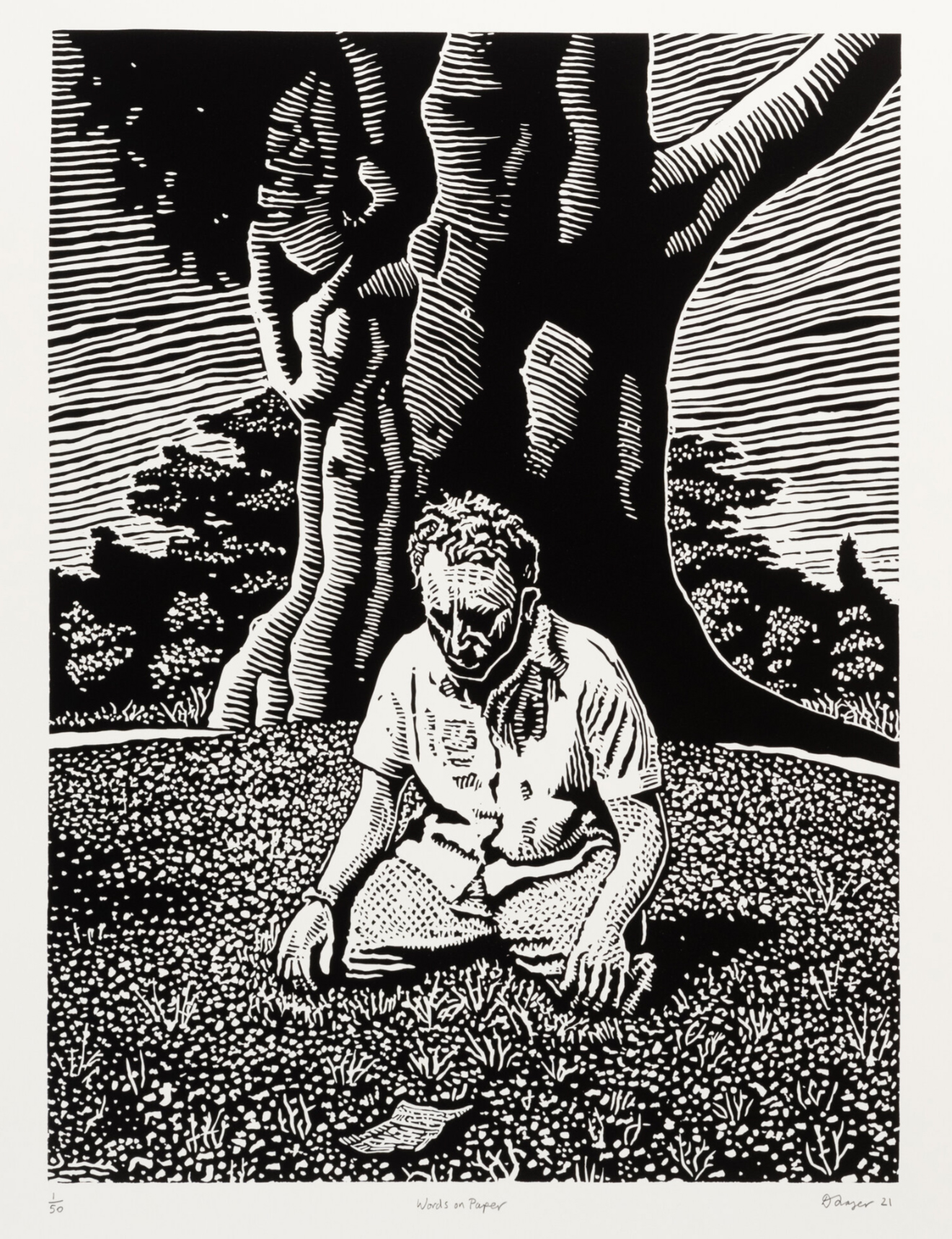Above:
David Frazer, Words on Paper, 2021, linocut, edition of 50, 58 x 43 cm.
Below:
David Frazer, Slow Boat, 2016, linocut, edition of 50, 120 x 180 cm.
David Frazer, The End of Yearning, 2021, linocut, edition of 50, 83.5 x 70 cm.
David Frazer, Love Letter (panels I & II), 2020, linocut, edition of 50, 99.5 x 148.5 cm.
David Frazer, Complicated Life II, 2020, linocut, edition of 50, 100.5 x 72 cm
All that you’ve loved: David Frazer at the Professor Joseph Burke Gallery, Trinity College. Courtesy of Evan Mery Photography
All images © and courtesy of the artist
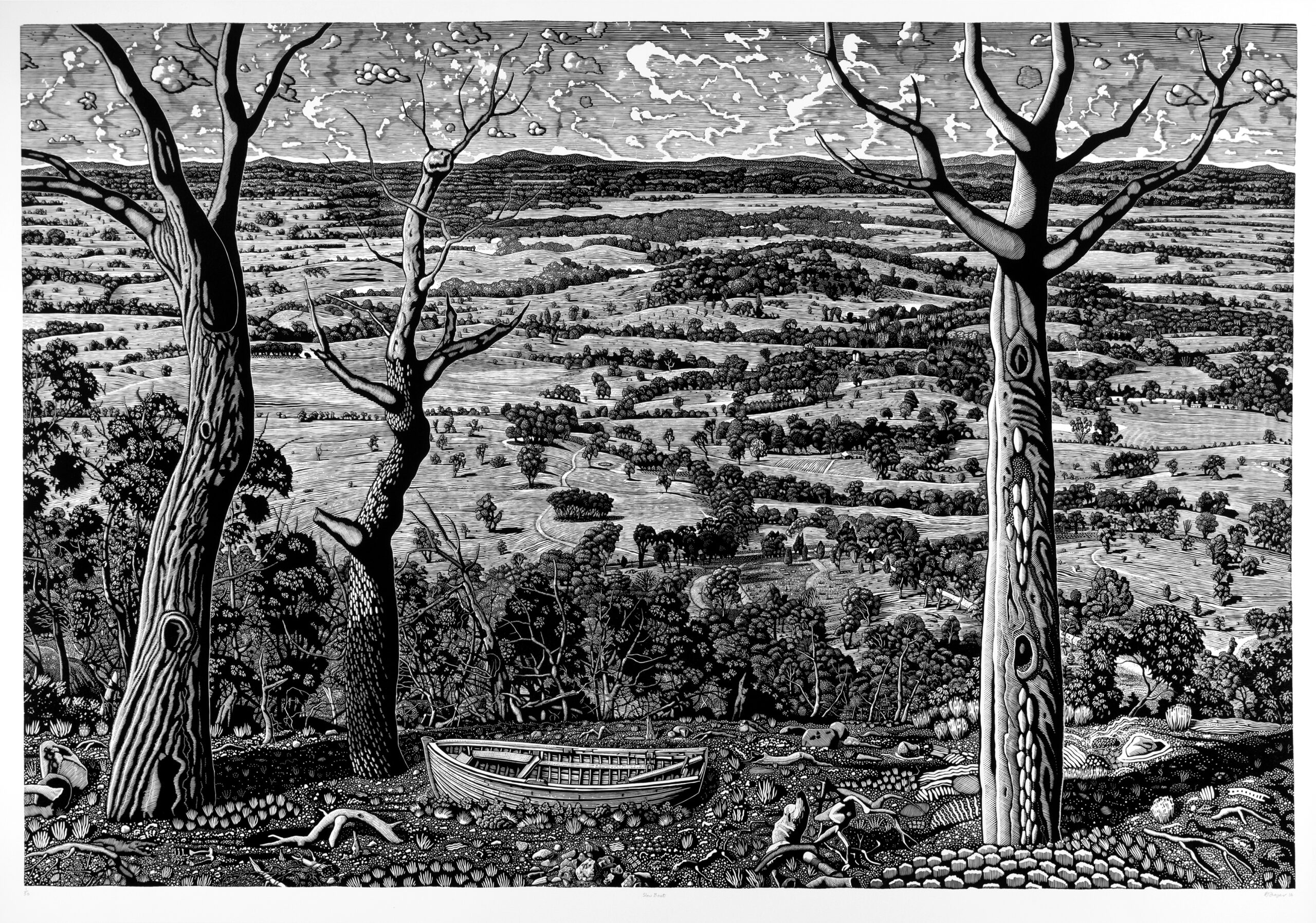
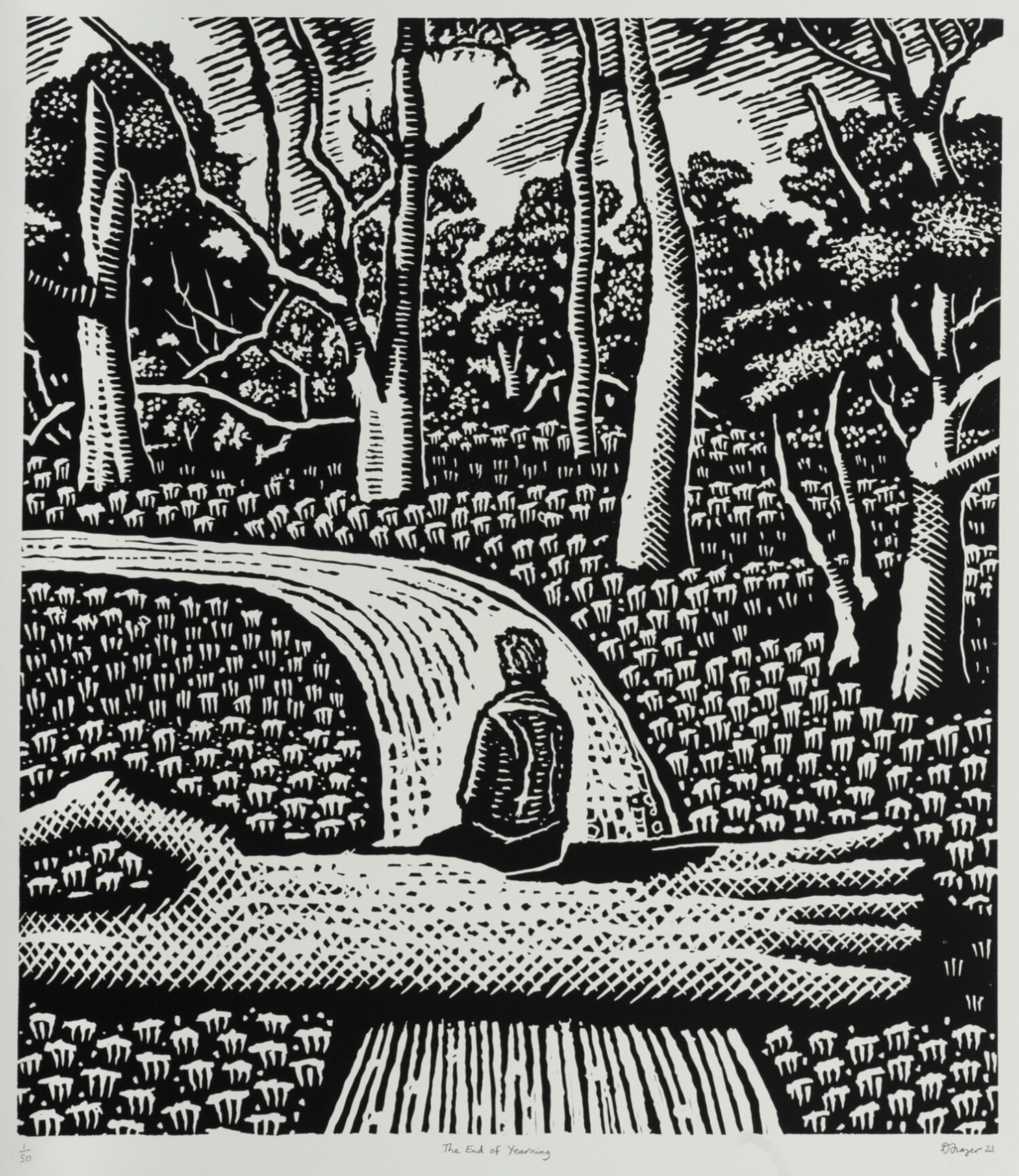
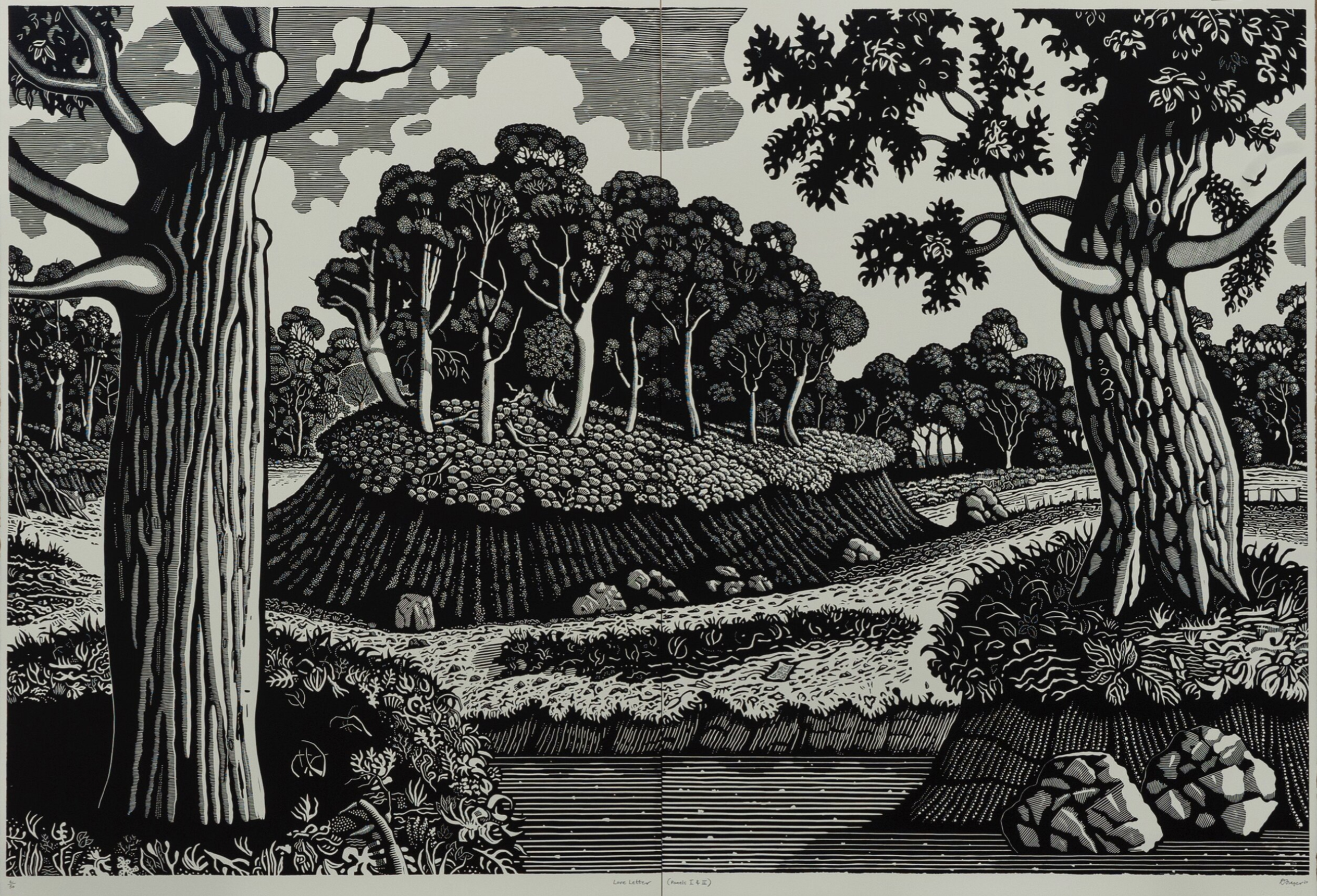
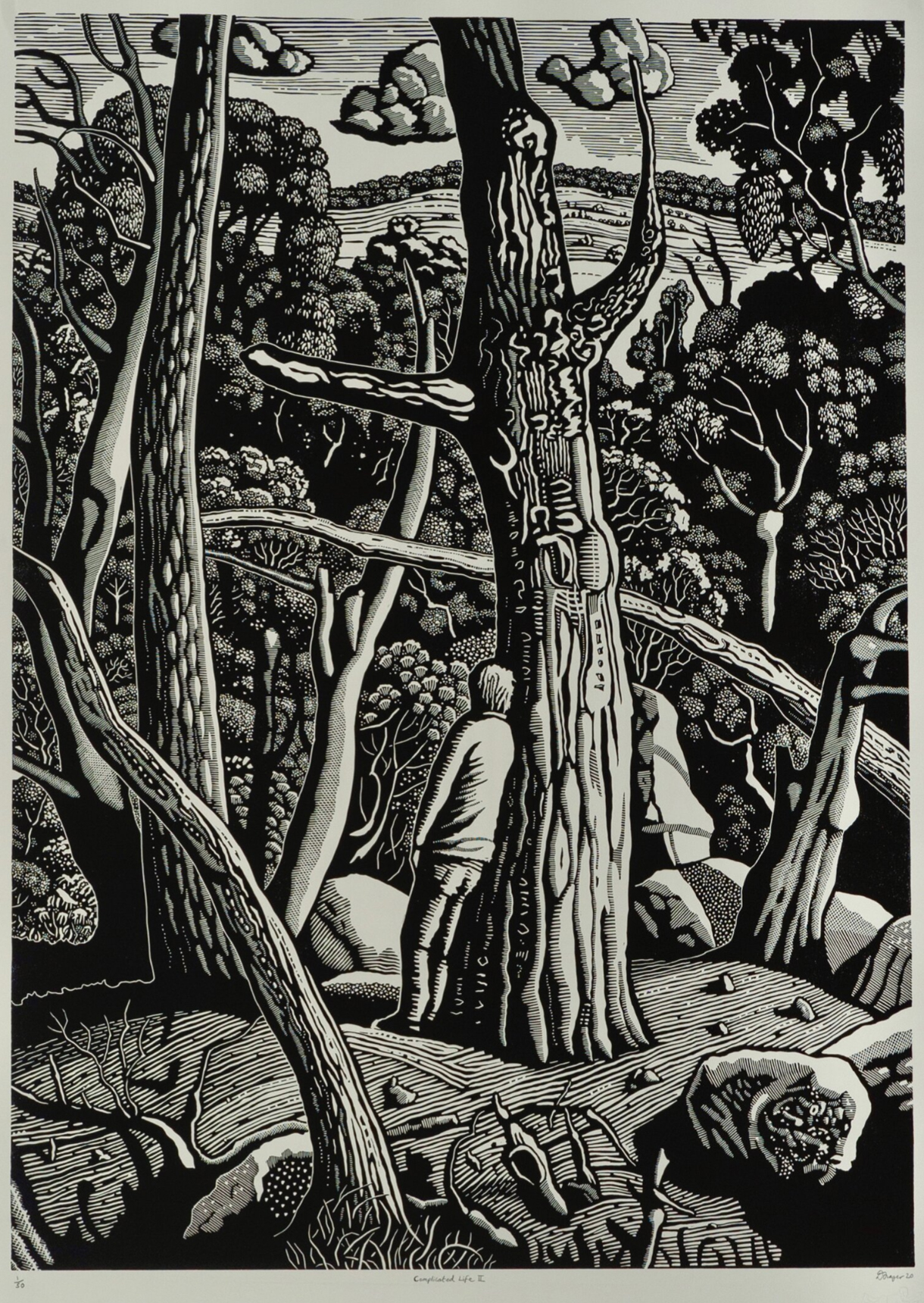
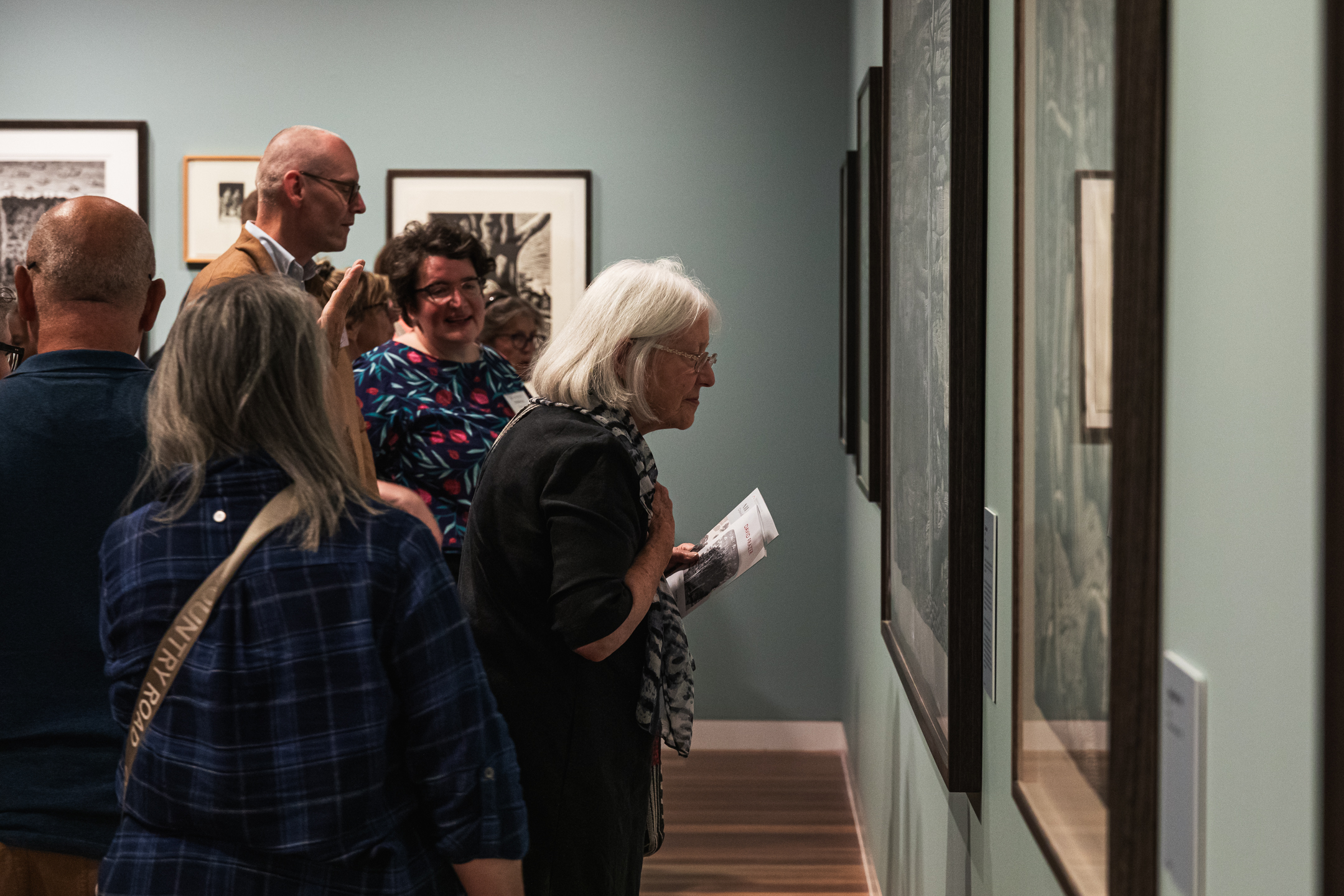
Q: What were some of the foundation ideas for this exhibition project?
A: The origins of this exhibition actually came through an approach from a colleague, Caroline Field, curator at the Australian Catholic University, with an invitation to write on one of David’s works in their collection – A Kind of Prayer – for her third volume in a series on works from the ACU collection, ‘Contemporary visions’.
The work resonated, perhaps in part because Trinity College has an Anglican heritage and continues to teach theological studies. The contemplative nature of A Kind of Prayer, and indeed many of David’s work – with his wry, humorous exploration of the human story – captured my interest.
Linocuts and wood engravings were already a medium that I admire greatly, for their strong graphic qualities. My doctoral thesis had focused on Daryl Lindsay, brother of noted print artist Lionel Lindsay. It was a pleasant surprise to learn that David and Lionel shared a distant family connection.
Q: How did the artwork selection take place?
A: I had a number of works in mind that I was hoping we would be able to include, and a visit to David’s studio in Castlemaine confirmed that not only had David retained the artist proof for many of these, but many others.
What I had initially envisaged as being thematic – around his engagement with musicians, representations of landscape, or his ‘hopeless blokes’ – shifted slightly after that studio visit to become more retrospective of the last twenty years of his art practice.
There were evident themes that I felt were illustrated in the works he had retained, that spoke into my earlier ideas of the exhibition, while allowing visitors to see the development of his work and style over time.
Q: How does the exhibition manifest – what do visitors experience?
A: The exhibition both introduces visitors to these various shifts and developments in David’s work over the past couple of decades, as well as exploring several recurring themes and subjects within his work.
Among the earliest prints, are several from the early 2000s that touch on his expressed longing as a child to leave the Wimmera, in Victoria’s western district, but also a deep appreciation of the landscape of the region. These experiences give rise to the character of ‘Mr Vertigo’ – desiring to fly away, but equally scared of heights – which is not only expressed in print form but, in time, becomes an embossed monogram in the corner of many of his works. In many respects, this attribute of being caught between a desire to move forward and a seemingly inability to do so, reappears in various guises throughout David’s work and is one that I think resonates for many of us; whether that’s in relationships, work and careers, or other such situations.
We also see David’s engagement with the lyrics of some of his favourite musicians which continues throughout the exhibition up until his most recent works, in both the form of broadsheets as well as custom artist books, as well as his beautiful representations of landscape. Throughout all of these, we are shown his recurring exploration of the human condition, the fragility and challenges of relationships, and his often slightly tragic, bewildered protagonists, but illustrated with a certain dry humour.
Q: What are some of the key works and what subject matter do they deal with?
A: There are several works that, to my mind, really stand out. The Deal (2015), and the accompanying study, offer a beautifully poetic depiction of a couple travelling along life’s road together, despite the concealed parts of the road that lie ahead, as it dips out of our view and into the heavily wooded forest. Despite the same central subject matter of the couple, the study for the larger work is read very differently. It is tightly cropped around the couple, whereas the full works situates them within this much larger landscape, where they are reduced to a small part within the whole, almost consumed.
Slow Boat (2016) is just masterful! Four months of pain-staking work to produce David’s largest linocut to date (and he tells me he’ll not be repeating that scale anytime soon!). The sweeping vista across the landscape, with the stand of three, gnarled sentinel-like trees in the foreground seems to be distinct in not including human figures. But the solitary and empty rowboat, a motif that David has incorporated elsewhere – and at times, occupied by a long figure – and even the three trees themselves, allude to figures being present, or recently so. The shear futility of the small boat, nowhere near water and now left alone and almost consumed by the surrounding landscape, has overtones of aspects of what we see in The Deal.
Those two are both large, impressive works. But there is a quiet beauty in some of the smaller works. Although not produced as a series, we could look to works such as Another Night on Earth (2005), Words on Paper (2021), A Kind of Prayer (2021) and a small vignette of With a letter and a prayer within the larger broadsheet of illustrations of Nick Cave’s song, Love Letter (2021). All of these seem to hint at a certain spirituality, not necessarily religious, but that timeless question of our earthy existence, relationships with one another, and a plea to some form of higher power.
Q: What is it about the printmaking experience that you most appreciate?
A: For me, it’s the strong graphical quality of printmaking that appeals. Particularly when working without colour, as David generally does, the ability to create richness and depth through texture and tone is really quite striking. David has reflected on it in the past, but as a medium, printmaking – and even black and white pen work – has such a strong history in narrative story-telling. One has to only think of the late nineteenth newspapers or the various comic magazines as well as more contemporary graphic novels, to see how the medium has been explored in that way. Giving visual form to song lyrics is such an interesting and novel approach, and one that so readily lends itself to the medium.
—
Dr Benjamin Thomas is Rusden Curator, Cultural Collections, at Trinity College, the University of Melbourne.
—
All that you’ve loved: David Frazer is at The Professor Sir Joseph Burke Gallery, Gateway Building, level 1, Trinity College, 100 Royal Parade, Parkville [entrance to the Gateway Building via Tin Alley, opposite the Beaurepaire Centre] until 30 May (Tuesdays and Thursdays, 10am-4pm)
www.trinity.unimelb.edu.au/whats-happening/art/exhibitions/all-that-you-ve-loved
David Frazer – The Crooked Tree is at Australian Galleries, 28 Derby Street, Collingwood, Melbourne,9 -27 April.
australiangalleries.com.au/exhibitions/
Opening Night 9 April, 6-8pm
Artist Talk 13 April, 2pm
—
Join the PCA and become a member. You’ll get the fine-art quarterly print magazine Imprint, free promotion of your exhibitions, discounts on art materials and a range of other exclusive benefits.

